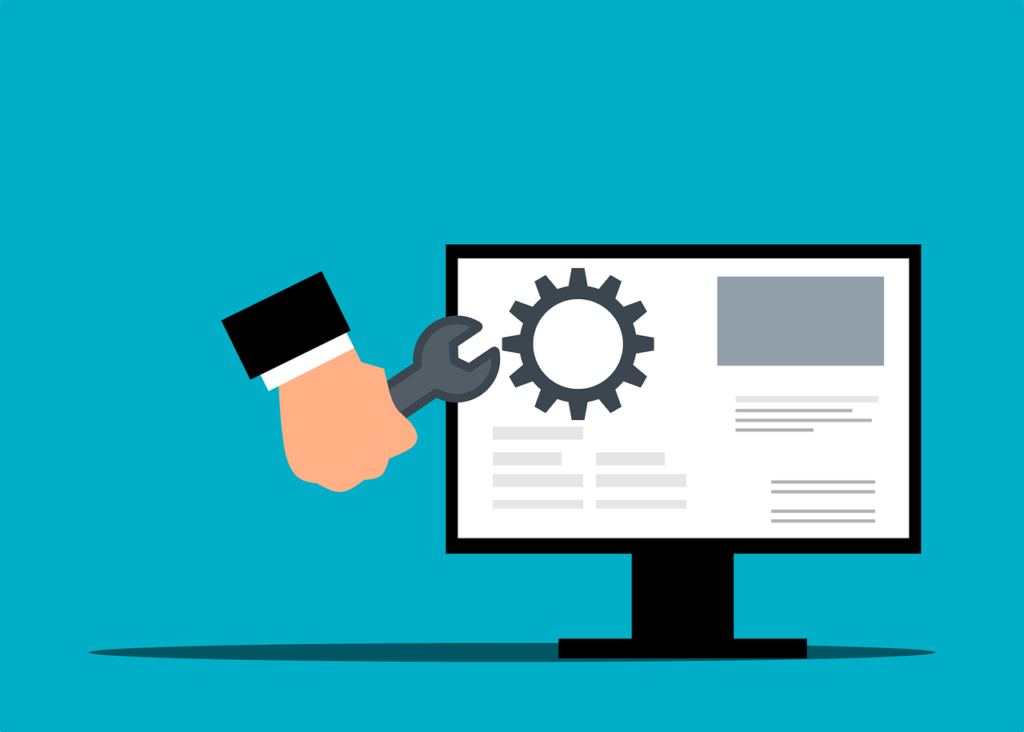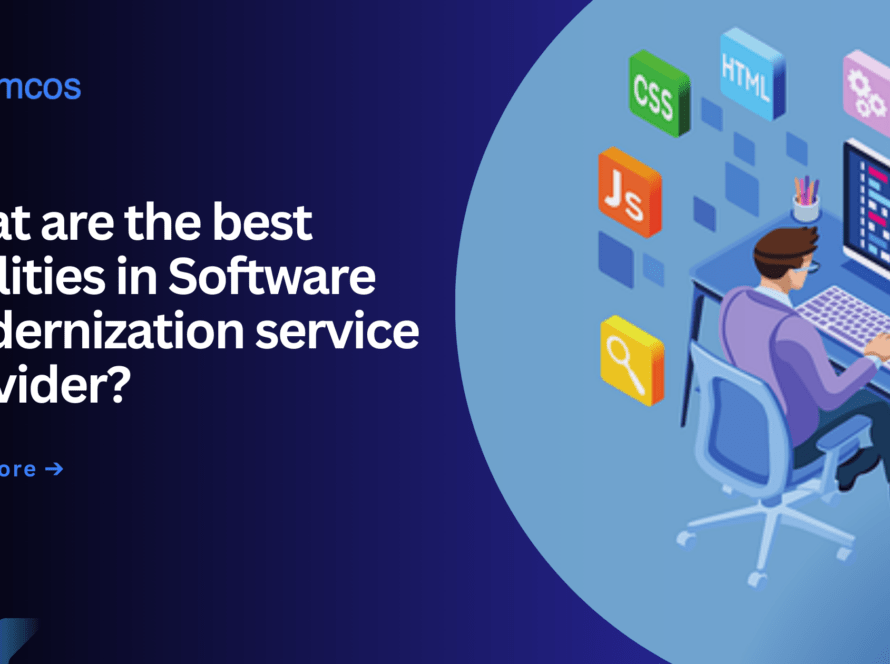The ability to adapt and innovate is critical for businesses to survive and grow in the competitive modern landscape. To do this companies have to utilise modern technologies to their utmost limits. Businesses have to ensure that they meet their customers expectations and drive growth. All these requirements of the modern markets demands businesses to modernise their legacy software.
Table of Contents
What is Software Modernization?
Software modernization refers to the process of updating the legacy software systems in order to meet the current and future business demands. The modernisation process includes re-architecting, re-coding, or migrating existing applications to more modern platforms and technologies. The primary goal of modernisation is to improve the system performance, stability, security and integrability of the legacy applications. Modernisation ranges from simple updates to complete overhauls depending on the complexity and requirements of the business.
Software Modernization strategy

A successful modernisation strategy involves several critical steps to ensure that the transformation aligns with business objectives and delivers tangible benefits.
- Assess the current software
The initial step of any modernisation process is to thoroughly assess the current software. The main focus should be identification of limitations and efficiencies of the existing systems,understanding their impact on the business and determining which systems are in a dire need of modernisation. Some of these factors include performance and scalability issues, security vulnerabilities, maintenance and operational costs, compatibility and user experience.
- Define clear objectives
The second step after assessment is to define clear goals and objectives for the modernisation process. These objectives should be in accordance with the business needs and strategies. These objectives serve as the goal posts and help in the creation of a roadmap towards them. Common objectives include improving system performance and reliability, enhancing security and compliance, increasing scalability and flexibility, reducing operational and maintenance costs and enabling new capabilities and innovations
- Develop a Software Modernization roadmap
To guide modernisation to its goal it is imperative to create a detailed roadmap for the process. This framework outlines the steps and benchmarks that have to be completed. These guidelines streamline the process of modernisation and make it simple and tangible. This process includes establishing metrics for success and monitoring progress, setting timeline and budgets, prioritising the systems and components and identifying the appropriate modernisation approaches.
- Select the right technologies
Selecting the right technologies is one of the most important aspects of the modernisation process. It should be kept in mind that the selected technologies support business’s current and future needs, are integrable with existing systems and offer great performance, security and scalability and are within budget. Common services required include cloud platforms, modern programming languages, DevOps tools, Data management and analytics solution and security and compliance tools.
- Plan for continuous improvement
Modernisation is not a one time effort but rather an ongoing and continuous process. Businesses should keep this in mind and plan their processes for continuous improvement. This is possible by regularly reviewing and updating their systems to make sure that they keep up with technological advancements and evolving business needs. Continuous monitoring and analysing user feedback helps tremendously in this process.
Uses of Software Modernization
Software modernisation enhances business operations by providing various benefits such as enhanced performance, scalability, security, compliance, flexibility and reduced costs. Let’s take a look at them in detail:
- Handle heavy Workloads for Improved Performance
Modernized software are designed to handle heavy workloads and to provide seamless scalability. With the help of modern technologies such as microservices and cloud native architectures modern software ensures that their systems are able to perform efficiently under varying demands. This enhanced performance and scalability leads to faster transaction processing, improved user experiences and provides businesses with the ability to support more concurrent users.
- Protection against threats and security breaches
Legacy software tends to be vulnerable due to the lack of modern security measures which are critical for protection against modern threats and breaches. With modernisation businesses are able to implement the latest security protocols and practices to ensure protection of data and regulatory compliance. This reduces the risk of data breaches, enhances customer trust, and ensures adherence to industry standards and regulations.

- Increased agility and flexibility
Modern software architectures promote agility and flexibility. These modern architectures allow businesses to develop, deploy, and update applications more rapidly, respond to market changes quickly and innovate without the constraints imposed by monolithic systems. This agility allows businesses to stay competitive and adapt to the evolving customer needs.
- Significant Cost saving
Modernising software leads to significant cost savings. Modernisation achieves this by reducing maintenance and operational expenses associated with legacy systems. Modern systems require fewer resources to manage and are easier to update, they come with more predictable cost structures, such as cloud-based subscription models. Additionally the improved efficiency and performance also lead to reduced operational costs.
Impact of a Modernized Software on business growth
Software modernization takes business operations to new heights and helps businesses survive and thrive in the modern digital age. Modernisation provides businesses with tools that help them enhance their overall performance and productivity and facilitate better decision making.
1. Improved data insights
With the help of advanced analytics and data management capabilities provided by modernised software, businesses are able to gain deeper insights. This provides businesses with better understanding of their operations, consumer behaviour and market trends. Modern tools such as real time data processing and reporting tools allow businesses to make more informed decisions, aid in identification of new opportunities and help them optimise their strategies providing them greater yields and results.
2. Boosts productivity
Modern software solutions provide businesses with tools that significantly increase productivity. These tools streamline workflows and automate various tasks which allows employees to focus on more important tasks instead of doing time consuming manual tasks. Improved collaboration tools also facilitate better teamwork and communication which further boost productivity.
3. Innovation and growth
Modern technologies help businesses save time and reduce costs. They provide businesses with tools to enable prototyping and development. Personnel now with more time, budget and modern tools marble to apply these resources to fuel innovation and growth. As innovation increases more customers are attracted, new markets are entered and businesses are able to differentiate themselves from their competitors. This grows the business and helps it thrive in a competitive market.
4. Improved customer experience
Customer retention and brand image is critical for the survival of any business. With the help of modernized software businesses provide customers with better user experience. This is done by providing faster response times, personalised services and more reliable interactions. Advanced analytics and AI capabilities help businesses analyse customer feedback which allows them to improve their services and products. This increases customer satisfaction which leads to an improved image and consumer retention.
5. Powerful tools for Competitive advantage
Modernized and improved software provides businesses with a competitive edge with its versatile and powerful tools. With the help of these tools businesses are able to quickly respond to market changes, offer innovative solutions, and provide superior customer experiences. This advantage helps businesses attract and retain customers, increase market share, and achieve sustained growth.
Software modernisation has become a strategic imperative for businesses who wish to grow and thrive in today’s digital market. With the help of modernisation businesses gain tools to enhance performance, improve security, increase agility, and reduce costs. These improvements translate into significant benefits, including better data insights, increased productivity, innovation, improved customer experience, and a competitive edge.
Businesses need to ensure that a right strategy is adopted for modernisation, one which aligns with their business goals. This provides businesses with great results and improves their overall growth, innovations, productivity and efficiency, all of which are critical for survival in a competitive market.

How does Himcos help?
Himcos provides Software Modernization services. Our experts help improve performance, reduce costs, enhance security, and foster innovation providing our clients with scalable, secure and high performing applications. Our tech teams are highly vetted and poses years of experience working on complex projects and meeting strict deadlines.



